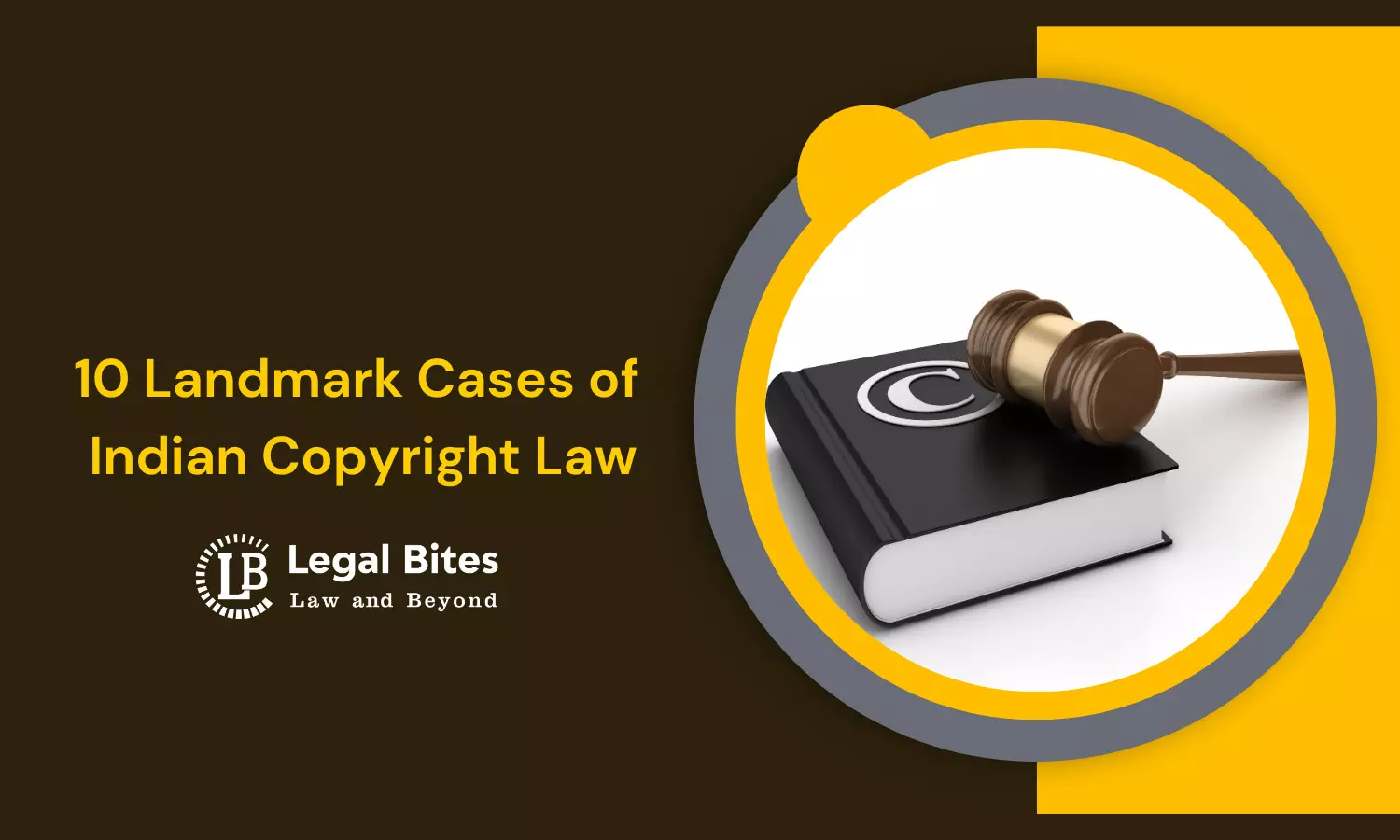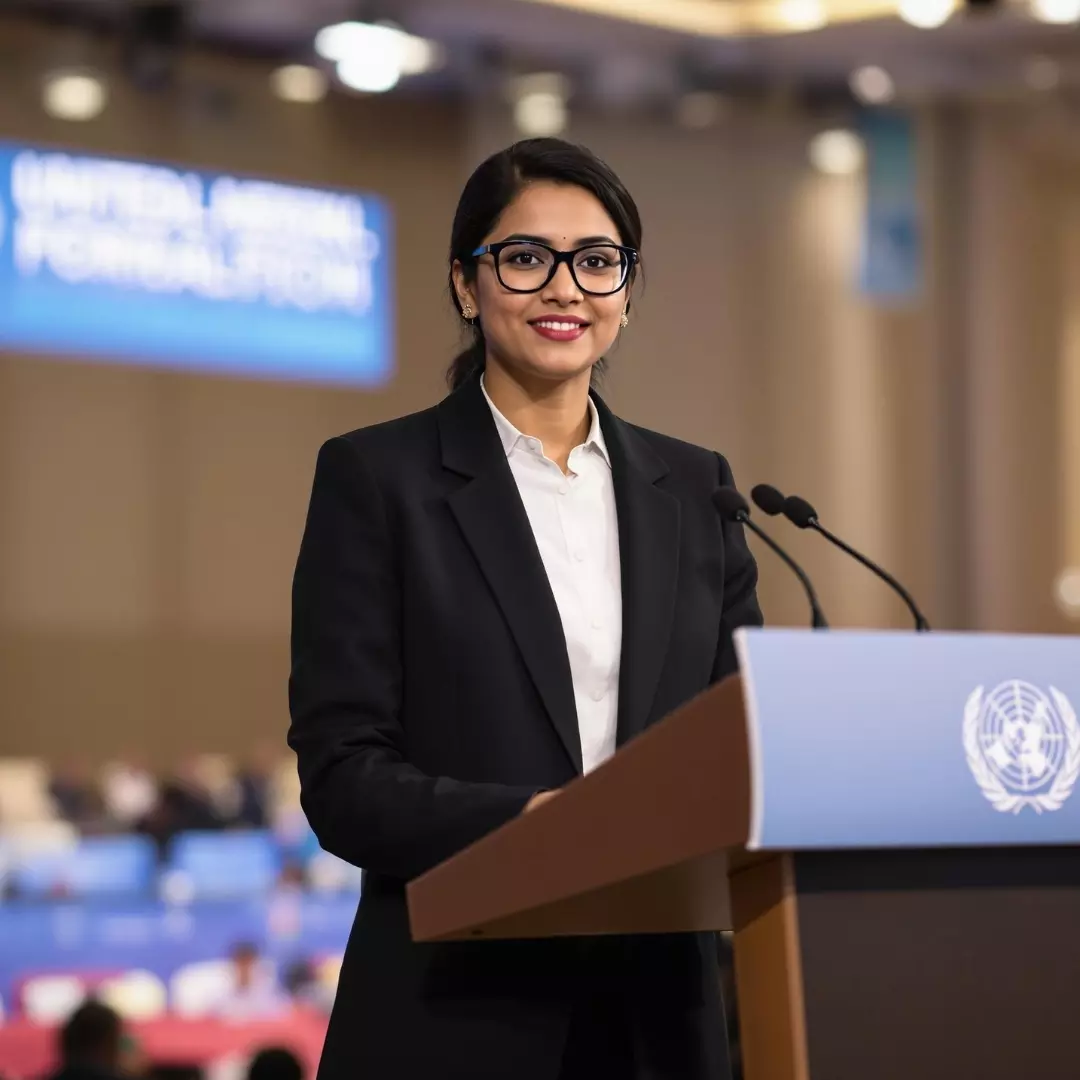10 Landmark Cases of Indian Copyright Law
These judgments collectively demonstrate the evolving nature of Indian copyright law and its adaptability to emerging challenges.

Copyright law in India serves as a critical framework for protecting the intellectual and creative efforts of individuals and businesses. The Indian Copyright Act, 1957, as amended from time to time, governs the protection of original literary, artistic, musical, and dramatic works, as well as sound recordings, cinematograph films, and computer software.
Copyright protection ensures that creators have exclusive rights over the reproduction, adaptation, and distribution of their works, thereby encouraging creativity and innovation. Over the years, Indian courts have played a significant role in defining the scope of copyright protection and resolving conflicts between creators and users of intellectual property. These judgments have helped establish the balance between the rights of copyright holders and the interests of the public, particularly in the context of technological advancements and digital media.
10 Landmark Cases of Indian Copyright Law
1. R.G. Anand v. Deluxe Films (1978)
This case dealt with the issue of copyright infringement in the context of dramatic works. R.G. Anand, a playwright, claimed that the movie “New Delhi” was based on his play “Hum Hindustani.” The Supreme Court held that mere similarity in themes is not enough to constitute infringement unless there is substantial copying of the expression. The Court introduced the "substance or essence" test to determine infringement, emphasizing that ideas are not protected under copyright—only their expression is.
2. Eastern Book Company v. D.B. Modak (2008)
In this case, the Supreme Court addressed the originality of legal texts. Eastern Book Company claimed copyright over its copy-edited judgments of the Supreme Court. The Court ruled that while the judgments themselves are public domain, the editorial inputs, such as headnotes and paragraphing, added a modicum of creativity, thus qualifying for copyright protection. This case aligned Indian law more closely with the “modicum of creativity” standard established in U.S. jurisprudence.
3. Indian Performing Right Society Ltd. v. Eastern Indian Motion Pictures Association (1977)
This case clarified the rights of lyricists and music composers versus film producers. The Supreme Court held that once a musical work is incorporated into a film, the producer becomes the first owner of the copyright in that work as per Section 17 of the Copyright Act. This judgment had far-reaching implications for the film and music industries, especially concerning royalty distribution.
4. Super Cassettes Industries Ltd. v. Entertainment Network (India) Ltd. (2008)
The Delhi High Court dealt with the issue of broadcasting copyrighted songs on FM radio without the permission of the copyright holder. The Court ruled in favour of Super Cassettes, stating that a license from the copyright owner is mandatory for broadcasting, reinforcing the exclusive nature of copyright ownership and the requirement of prior authorization.
5. Amarnath Sehgal v. Union of India (2005)
This landmark Delhi High Court judgment recognized the moral rights of artists under Section 57 of the Copyright Act. Amarnath Sehgal, a renowned sculptor, filed a suit after his mural was removed from the Vigyan Bhawan without his permission. The Court upheld the artist’s moral rights, ordering the Government to return the mural and pay damages. This was a milestone for moral rights jurisprudence in India.
6. Coca-Cola Company v. Bisleri International Pvt. Ltd. (2009)
In this case, Bisleri sold the “Maaza” trademark and formulation to Coca-Cola but later attempted to use the brand in a different jurisdiction. The Delhi High Court ruled that copyright and trademark rights were infringed by Bisleri's export of the product using the “Maaza” mark, despite the sale agreement. The case reinforced the global reach and enforcement of Indian copyright and trademark agreements.
7. Academy of General Education, Manipal v. B. Malini Mallya (2009)
This case focused on the infringement of literary work. The Supreme Court upheld the respondent’s copyright over seven Yakshagana ballets bequeathed through the Will of Dr. Karanth. The Court recognized the originality of the work and held that it qualified as a protected dramatic and literary work under the Copyright Act, 1957. A modified injunction was granted, allowing exceptions under Section 52 for fair use, educational activities, and non-commercial performances.
8. Najma Heptulla v. Orient Longman Ltd. (1989)
In this case, the Delhi High Court held that Maulana Azad and Prof. Humayun Kabir were joint authors of the book India Wins Freedom. The Court found that the legal heirs, including the plaintiff’s predecessor, had accepted royalties under a 1958 agreement allowing publication of the book, including 30 sealed pages to be released after 30 years. Having acquiesced to this arrangement for decades, the plaintiff could not later object. The Court vacated the injunction, permitting publication while safeguarding the plaintiff’s financial interest
9. Indian Express Newspapers v. Jagmohan (1985)
In this case, the Bombay High Court addressed a plea to restrain the release of the film Kamla, alleged to defame the Indian Express and its journalist Ashwini Sarin by fictionalizing real events he reported. While the Court held there was no copyright in real-life events, it ruled that certain scenes in the film closely resembled and defamed identifiable individuals and the newspaper's management. The Court allowed the film's release only after specific defamatory scenes were deleted.
10. Saregama India Limited v. Balaji Motion Pictures Ltd. & Ors. (2019)
In this case the Court granted an interim injunction restraining the defendants from using the Marathi song “Var Dhagala Lagli Kal” in their film Dream Girl, holding that Saregama had a prima facie case of copyright infringement. The Court found that Saregama had acquired rights in perpetuity under a 1979 agreement and noted that Zee Entertainment had been paying royalties for the song, thus estopping it from denying Saregama's rights. The Court rejected the jurisdictional challenge and emphasized that both economic and moral rights, including proper credit, warranted protection.
References
- R.G. Anand v. Deluxe Films, AIR 1978 SC 1613
- Eastern Book Company v. D.B. Modak, (2008) 1 SCC 1
- Indian Performing Right Society Ltd. v. Eastern Indian Motion Pictures Association, AIR 1977 SC 1443
- Super Cassettes Industries Ltd. v. Entertainment Network (India) Ltd., 2008 (38) PTC 385 (Del)
- Amarnath Sehgal v. Union of India, 117 (2005) DLT 717
- Coca-Cola Company v. Bisleri International Pvt. Ltd., (2009) 164 DLT 59
- Academy of General Education, Manipal v. B. Malini Mallya, 2009 (4) SCC 256
- Najma Heptulla v. Orient Longman Ltd., AIR 1989 Del 63
- Indian Express Newspapers v. Jagmohan, AIR 1985 Del 29
Saregama India Ltd. v. Balaji Motion Pictures Ltd. & Ors, CS(COMM) 492/2019

